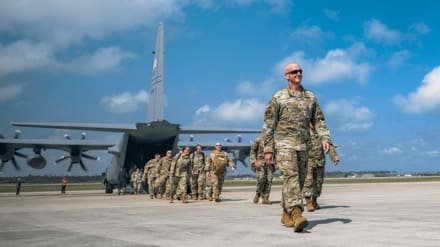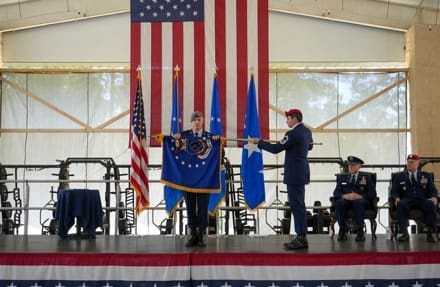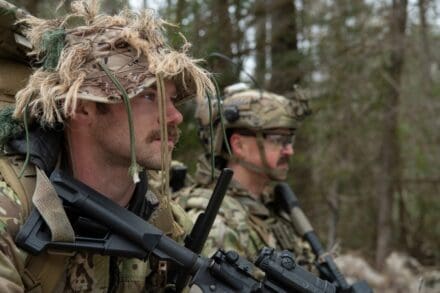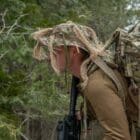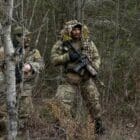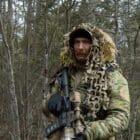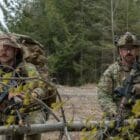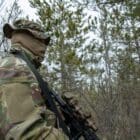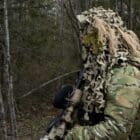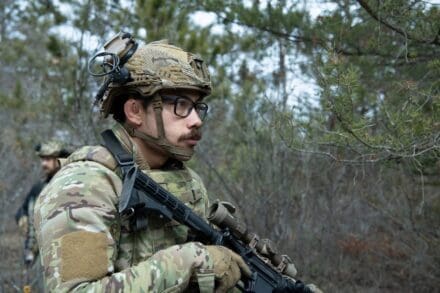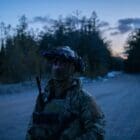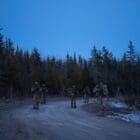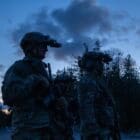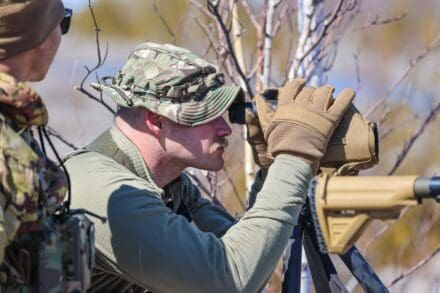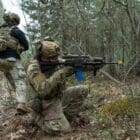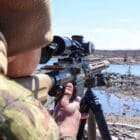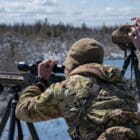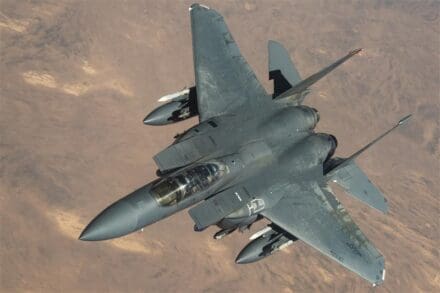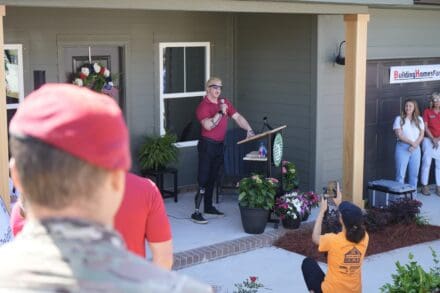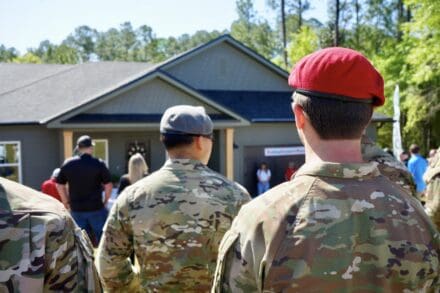TRINIDAD AND TOBAGO (AFNS) —
Mission Ready Airmen assigned to the 137th Special Operations Wingmission sustainment team, Oklahoma Air National Guard, strengthened critical self-sustaining skills and assessed their ability to operate in multiple expeditionary environments across the Caribbean during TRADEWINDS25, April 21-May 5.
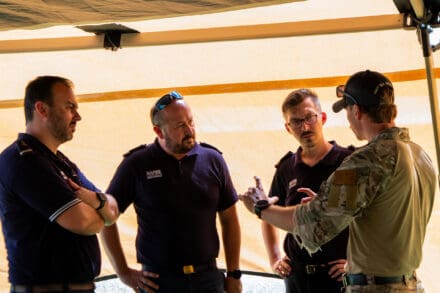
The team conducted five total maneuvers during the exercise, establishing forward operating sites in Trinidad and Tobago, Antigua, Martinique and Puerto Rico. This is the first time the 137th SOW’s current MST Airmen conducted agile combat readiness in environments outside of the continental U.S. These rapid maneuvers tested their resiliency, adaptiveness and ability to integrate logistics with U.S. Air Force aircrews and multinational hosts.
“Being able to operate in environments where you don’t have the logistical footprint to move resupplies in is critical,” said Lt. Col. Morgan Mathis, mission sustainment team commander. “With each maneuver, we are dealing with different embassies, different security operations officers and different militaries to enable movement into those different countries. That is a big push for us this Tradewinds.”
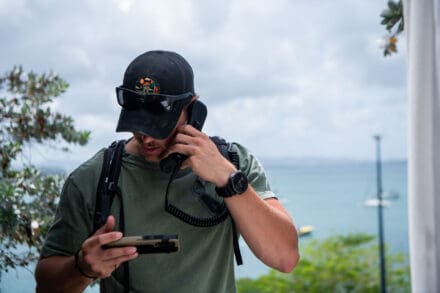
Mission sustainment teams are employed in support of Air Force Special Operations Command assets. By exercising enhanced operational reach and sustainment through integrated logistics, pre-positioning of forces and shared infrastructure during TW25, the 137th SOW MST assessed their ability to ensure readiness and responsiveness for future exercises and operations.
The 40th iteration of Tradewinds, a U.S. Southern Command-sponsored, regionally oriented annual exercise with 26 participating nations, provided a platform for the 137th SOW MST to train in ground, air and cyber operations. Although the exercise was held in Trinidad and Tobago, the 137th SOW team’s various movements to neighboring islands offered a blueprint for what future iterations of the exercise could incorporate to further interoperability between Caribbean nations.

“This team is able to provide a proof of concept by moving around to different countries and seeing what standard operating procedures we can develop for next year so that we can expand that Agile Combat Employment all over the Caribbean and all over the U.S. Southern Command,” Mathis added.
The first iteration of the 137th SOW MST was established in 2021, aligning AFSOC forces with the U.S. Air Force’s shift toward ACE. ACE is a concept that allows Mission Ready Airmen to operate in expeditionary environments to maintain posture, command and control, movement and maneuver, protection and sustainment. This is reliant on their ability to rapidly execute operations from various locations with integrated capabilities and interoperability, as 137th SOW Mission Ready Airmen demonstrated in TW25, through technical training and by conducting multiple maneuvers across Caribbean islands.
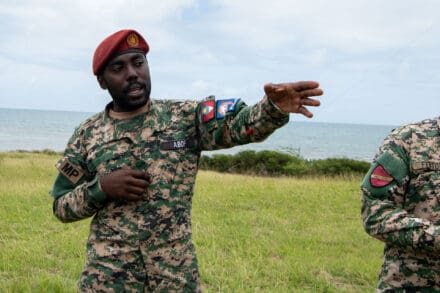
In the 18 months leading up to TW25, Airmen assigned to the current 137th SOW MST were hand-picked to form a team centered around enabling rapid maneuvers around areas of responsibility, sustaining AFSOC forces, providing force and medical protection to those forces, and mission generation: being able to rearm, refuel, launch, land and recover aircraft.
TW25 is the fourth major field training exercise this team participated in, each with an emphasis on movement and maneuver, protection, mission generation or sustainment. While operating in the Caribbean, Airmen assigned to the 137th SOW MST focused on the movement and maneuver and the sustainment elements of their mission.
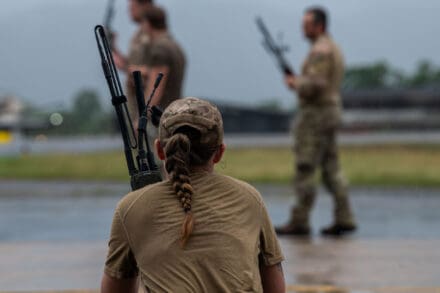
“This is a huge opportunity for our Airmen to learn, to grow, to be leaders and to make decisions,” Mathis said. “As we look toward the future, exercises are how our Airmen are going to learn how to do mission command and how to problem solve on the fly without oversight. These exercises are a huge part of enabling them to gain that experience that, in the past, Airmen would have gotten through multiple deployments, but now they are getting through named exercises like Tradewinds.”
A key element to self-sustainable operations and maneuvers for Mission Ready Airmen is tactical combat casualty care tier two. TCCC tier two equips Mission Ready Airmen with advanced lifesaving skills that are crucial for sustainment in expeditionary environments. Airmen assigned to the 137th SOW MST enhanced these critical skills through multiple hands-on scenarios during TW25 in Trinidad and Tobago.
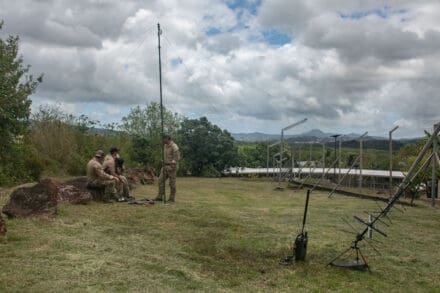
“TCCC tier two is especially critical for Mission Ready Airmen to understand and be proficient in,” said a 137th SOW TCCC instructor that accompanied the MST for TW25. “It is battlefield-proven to reduce preventable deaths. When they are in austere environments, these Airmen may be the only medical care available to their wingmen.
Following their operations in Trinidad and Tobago, the team shifted focus toward bolstering mobile communications.
Throughout their maneuvers, 137th SOW Airmen were tasked to establish and test the effectiveness and reliability of Mobile Ad-hoc Network, or MANET, communication networks between dispersed 137th SOW Airmen across Caribbean-centric islands in multinational operations, increasing the survivability, security and sustainability of communications as ACE’s command and control element requires.
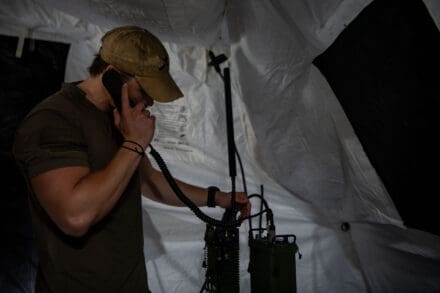
With each maneuver to a new island, 137th SOW Mission Ready Airmen would establish a near vertical incidence skywave antenna to bounce high-frequency radio waves off of internal mobile communications. Alongside the NVIS technology, the 137th SOW team utilized handheld AN/PRC-163 radios to extend their secure communications networks further as they tested line-of-sight communications on the island of Martinique, and satellite communications to Wingmen on other islands and to units stationed in North Carolina and New York.
This technical and hands-on training provided a foundation for 137th SOW MST Airmen to participate in a cross-functional mobile communications discussion with members of the French Navy while the team was operating in Martinique.
“Communications are a big part of MST,” Mathis shared. “Without communications, MST cannot operate. We want each of the members of the team to be proficient in not just basic communications but digital communications, line-of-sight and beyond.”
Similarly, the Mission Ready Airmen assigned to the 137th SOW MST conducted a knowledge exchange with the Antigua and Barbuda Defense Force where they compared combat casualty care methodologies and life-saving techniques, mission and command planning, supply transportations logistics and mobile communications while staying in Antigua.
By comparing mission essential strategies with multinational forces, the 137th SOW Mission Ready Airmen are able to reinforce their skillsets and expertise while enhancing foundational relations and interoperability for future exercises and operations.
Opportunities like TW25 allow for these Airmen to demonstrate their professionalism and proficiency as they continue to grow as leaders and Citizen Airmen. For many on the 137th SOW team, this was the first time they collaborated with a Caribbean nation.
“I was very appreciative of their hospitality,” an MST Airman noted. “This exercise has helped me expand my worldview in ways that will continue to help me grow as a person and as a Mission Ready Airman.”
As Guardsmen, the 137th SOW team has the advantage of retainability, allowing for TW25 multinational interoperability opportunities to serve as a cornerstone for continuity and lasting relations that will allow 137th SOW Mission Ready Airmen to better support Air Force Special Operations Command assets in future global operations.
The success of global operations relies on the ability of units like the 137th SOW MST to project, maneuver and sustain the joint force and is made stronger through continued relationships with allies and partners.
“Working with these host nations is everything,” Mathis said. “From initial planning and coordination to on the ground communication and logistics support, building that relationship with each of the countries is a big part of what we have been able to do in Tradewinds. We hope to continue that in the future as we practice working with partner nations to enable Agile Combat Employment for AFSOC.”
Collaboration with partners and participation in multinational operations and exercises, such as TW25, reinforces 137th SOW Mission Ready Airmen’s capabilities to operate in a high-intensity environment, improving readiness, responsiveness and interoperability in both peacetime and crisis.
By Senior Airman Erika Chapa
137th Special Operations Wing Public Affairs



